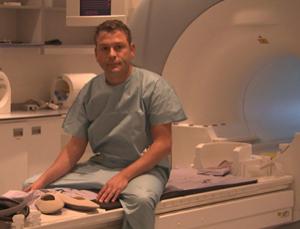 See more in our gallery: "A wide-eyed view on being high inside an fMRI"
See more in our gallery: "A wide-eyed view on being high inside an fMRI"
My usual pick-me-up on a Monday morning is a cup of coffee. Today it's going to be something very different.
I've been up since 6 am. I've had a breath test for alcohol, a urine test for drugs and a psychological test for mental health. Then I'm handed a red pill and a glass of water. I swallow it… and I'm told to relax. Which is easier said than done when you don't know if you've just taken vitamin C or 83 milligrams of pure MDMA.
Half an hour later I'm inside an fMRI brain scanner, my head clamped in place and a visor over my face. It's noisy and claustrophobic but I'm reassured by the panic button in my hand and a voice from the control room.
And then I start to feel it. A tingle of energy, like pins and needles, starts in the pit of my stomach and rises slowly, not unpleasant but not exactly pleasurable either. It builds in intensity, then breaks into a wave of bliss. The placebo effect can be powerful but when it happens again, I'm in no doubt. I'm coming up.
I'm taking part in a groundbreaking study on MDMA, the drug commonly known as ecstasy. The research is run by David Nutt of Imperial College London, a former government adviser and one of the few UK researchers licensed to study class-A drugs
His main aim is to discover what MDMA does to the human brain, something that, remarkably, has never been done before. A second goal is to study MDMA as a therapy for post-traumatic stress disorder. The experiment is also being filmed for a Channel 4 documentary called Drugs Live: The Ecstasy Trial, which will be broadcast in the UK next week.